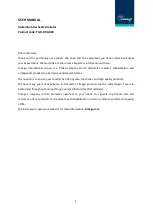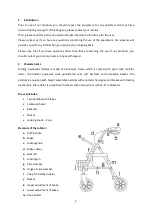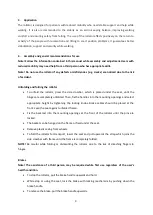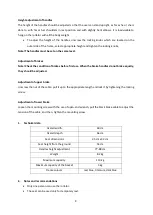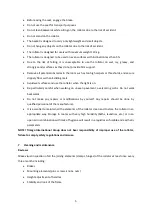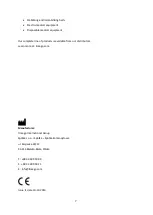
3
3.
Application
The rollator is designed for patients with reduced mobility who need stable support and help while
walking. It is also recommended to the elderly as an aid in keeping balance, improving walking
comfort and ensuring safety from falling. The use of the rollator affects positively on the return to
activity of the people with locomotion and tilting to erect position problems. It guarantees better
stabilization, support and security while walking.
4.
Assembly and general recommendations for use
Note!
Follow the information contained in this manual while assembly and adjustment. Users with
reduced mobility may need help from a third person who has appropriate skills.
Note! Do not use the rollator if any defects or deficiencies (e.g. cracks) are noticed due to the risk
of accident.
Unfolding and folding the rollator
•
To unfold the rollator, press the side crossbar, which is placed under the seat, until the
hinges are completely unfolded. Then, fix the handles into the mounting openings and select
appropriate height by tightening the locking knobs. Brake cables should be placed at the
front. Lean the seat against unfolded frame.
•
Fix the backrest into the mounting openings at the front of the rollator until the pins are
locked.
•
The basket can be hanged on the frame or fixed under the seat.
•
Remove plastic casing from wheels.
•
To fold the rollator for transport, lower the seat and pull upwards the strap which joins the
side crossbar with frame until the frame is completely folded.
NOTE!
Be careful while folding or dismantling the rollator due to the risk of smashing fingers in
hinges.
Brakes
Note! The assistance of a third person may be required while first use regardless of the user’s
health condition.
•
To stop the rollator, pull the brake handle upwards and hold.
•
While stop or using the seat, lock the brake with locking mechanism by pushing down the
brake handle.
•
To release the brake, pull the brake handle upwards.

